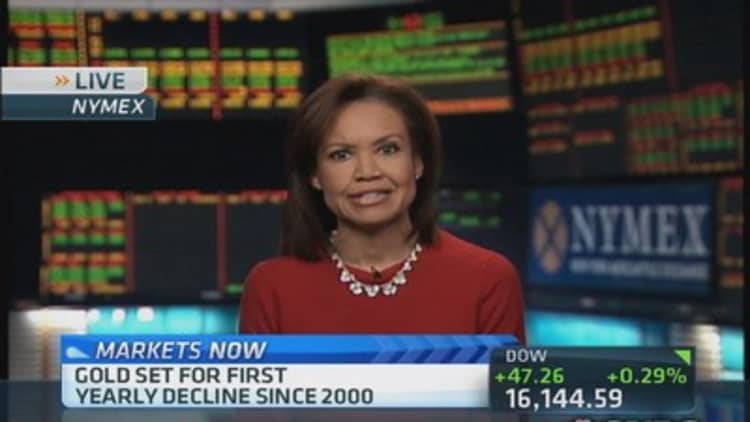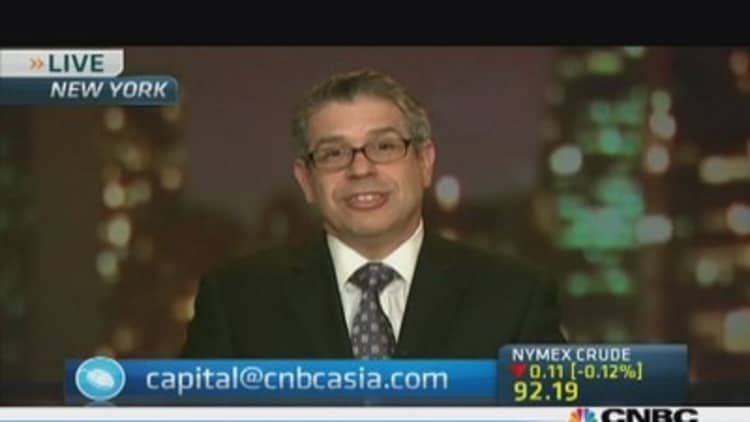
The spot gold price took its worst monthly tumble in November for 35 years, continuing the precious metal's steady decline in 2013.
As of Friday afternoon GMT, spot gold showed a decrease of around 5.5 percent for November. A price fall of such magnitude hasn't been seen in November since 1978, according to data from the World Gold Council, when prices plunged 20 percent.
"Gold's topsy-turvy year rolls on," Adrian Ash, head of research at BullionVault, said in a research note on Friday. "Thanks to the surging stock market, now at 6-year highs worldwide, there have been worse years for gold prices. But not many. By our maths, in fact, only two."
November is historically a good month for gold. Bullion has gained 1.4 percent on average during the month over the last 45 years, according to research by online gold exchange BullionVault.
(Read More: With gold scarce,Indian wedding buyers recycle jewellery)
Ash pointed towards waning demand in India as a key reason behind the move south. Net gold imports to China – another major market for gold -- remain strong, but imports to India have been hit by a government clampdown. Fears over India's current account deficit have led to officials trying to curb the high level of gold imports.

India was until recently the biggest consumer of gold, but has been overtaken by China, according to the World Gold Council. Diwali festivities and the upcoming wedding season are seen as traditional drivers of gold demand in November for India.
Spot gold rested at $1,252 an ounce on Friday and was headed for its biggest monthly drop since June. It has lost over a quarter of its value year-to-date, putting it on track to post its first annual loss in 13 years.
(Read More: Where are Treasurys going? Just watch gold)
Gold surged around 400 percent between 2002 and 2012, helped by low interest rates, extra liquidity from the U.S. Federal Reserve and concerns over the global economy, which drove investors towards perceived safe-haven assets like bullion.
But with the Fed looking to take its foot off the gas in terms of its $85 billion per month asset purchases soon, many analysts predict gold could continue its move lower.
Citi said this month that gold was about to enter "phase two" of its bear market and its downside target for the metal is now $1,111 per ounce. Goldman Sachs, meanwhile, predicts a "significant decline" in gold in 2014, with a fall of at least 15 percent.
By CNBC.com's Matt Clinch. Follow him on Twitter @mattclinch81


